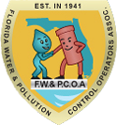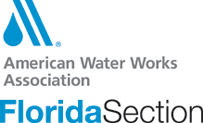Category Archives: Current News
AWWA Supports Lead Line Removal in Proposed Rule, Raises Concerns on Timeline, Feasibility, Affordability
In formal comments submitted recently on the proposed Lead and Copper Rule Improvements (LCRI) rule, the American Water Works Association (AWWA) reaffirmed its support for the removal of lead service lines nationwide, while recommending critical revisions to make the rule feasible to implement and affordable for communities.
“Over the last several decades, the drinking water community has made tremendous strides in reducing lead levels in drinking water,” AWWA wrote in comments to the U.S. Environmental Protection Agency (EPA), which announced its LCRI proposal on Nov. 30, 2023. “More can and should be done. The next steps in drinking water policy to further lead risk reduction must be credible, legally sound, truly feasible, and appropriate to the challenge at hand.”
AWWA wrote that EPA’s estimated cost of the rule—between $3 and 4.9 billion annually—is higher than any previous regulation under the Safe Drinking Water Act (SDWA), and the costs of compliance will be directly passed to water utility customers. According to AWWA estimates, the total cost of removing all lead service lines in the United States could top $90 billion. Noting that many community water systems are small and have limited resources, AWWA stressed that many communities will face financial, logistical, and personnel challenges and may be unable to meet EPA’s timeline.
AWWA supports EPA’s intention to continue with a “treatment technique” to control lead and copper, through which water systems actively manage the corrosivity of the water to minimize the possibility of lead getting into drinking water, rather than attempting to establish a maximum contaminant level at faucets within homes.
Among the chief concerns AWWA expressed was that the rule equates community water systems having “access” to private property with a system having “control” over the service line on private property. Because ownership of lead service lines is often split between a water system and private property owners, accessing pipes on private property is often a barrier to complete service line removal. AWWA stressed that control “is based on ownership. The definition of what is ‘under the control’ of water systems as described in SDWA does not include piping not owned by the water system, even when the actual owner uses their ‘control’ to grant ‘access’ to a water system.”
The proposed LCRI lowers the lead action level—a measure of the effectiveness of the corrosion control treatment in water systems—to 10 parts per billion (ppb) from 15 ppb, introduces a new sampling protocol, and changes how sample sites are prioritized. These changes will make the action level much harder to consistently achieve. AWWA’s comments stress that EPA has not demonstrated that water systems targeted by the rule will be able to consistently comply with the lower action level.
The public comment period on the LCRI proposal concluded Feb. 5.
“AWWA is a proponent of strong protections for water consumers today, while we work for a future when lead is no longer in contact with drinking water,” AWWA wrote. “AWWA hopes that these comments will assist EPA as it formulates a final LCRI that achieves additional risk reduction, while recognizing the additional resource-intensive challenges facing water systems, including per- and polyfluoroalkyl substances (PFAS), cybersecurity, climate change, and aging infrastructure.”
Implementation of the Lead and Copper Rule (LCR) over the past 25 years has resulted in major improvements in public health; the number of the nation’s largest drinking water systems with a 90th percentile sample value exceeding the LCR action level of 15 ppb has decreased by over 90 percent since the initial implementation of the LCR. An EPA white paper in 2016 on the LCR revisions states that median blood levels for young children have decreased ten-fold since the mid-1970s.
AWWA Testifies on Opportunities to Improve Cybersecurity in the Water Sector
On January 31, at a hearing in Washington, D.C., before the Environment, Manufacturing, and Critical Materials Subcommittee of the U.S. House Committee on Energy and Commerce, the American Water Works Association (AWWA) testified about a collaborative approach to cybersecurity oversight in the water sector.
The hearing was titled “Ensuring the Cybersecurity of America’s Drinking Water Systems” and included experts from water organizations across the United States. Kevin Morley, AWWA federal relations manager, testified on behalf of the association, which represents 50,000 water professionals throughout North America and beyond.
“Strong cybersecurity measures are essential to ensuring a cyber incident does not threaten public health. Water systems need resources and regulatory oversight designed to mitigate the potential risks from cyberattacks around the clock, every day of the year. This means we need to act now,” Morley said.
Morley testified that a combination of regulatory and nonregulatory actions is necessary to tackle the cyber threats facing water systems. AWWA has recommended congressional action to support a new cybersecurity governance framework in the water sector that leverages the technical knowledge of utilities, cybersecurity experts, and regulators to implement a comprehensive cybersecurity risk management strategy. This model, authorized by federal legislation, would create an independent, nonfederal entity to lead the development of cybersecurity requirements using, in part, subject matter experts from the water sector. Federal oversight and approval of requirements would be provided by the U.S. Environmental Protection Agency, which already regulates drinking water and wastewater utility operations.
This collaborative approach builds on a similar model that has already been successfully applied in the electric sector. The recommendation also aligns with calls for greater public-private collaboration included in the National Cyber Strategy.
“The diverse nature of water utilities requires a tiered framework that recognizes the technical challenges facing the sector and sets reasonable cybersecurity requirements that focus on practical, protective, and implementable solutions,” Morley said.
In addition to establishing a sound oversight model, Morley shared three essential areas of collaboration that could enhance cybersecurity in the water sector. These areas include:
- Overcoming the digital divide
- Threat information sharing
- Vulnerability mitigation and technical assistance




